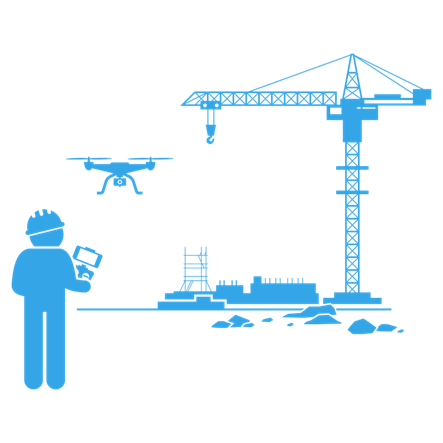The rumble of machinery, the clanging of steel, the symphony of construction – in this complex dance of progress, one melody rings paramount: safety. In the construction industry, where risk dances alongside reward, ensuring worker well-being isn't just a practice, it's a mission.
But traditional methods, while valiant, face limitations. So, where does the answer lie? Enter Construction Technology & Innovation, poised to transform safety practices, not just by building structures, but by building a safer tomorrow.
Facing the Risks, Embracing Innovation
Construction sites are vibrant hives of activity, but beneath the progress lies a constant tango with danger. Falling objects, hazardous materials, unguarded machinery – these are just a few of the perils that lurk.
Traditional safety protocols, from safety harnesses to hazard training, remain invaluable, but they need a technological ally. This is where technology steps in, ready to revolutionize how we protect our most valuable asset: the people who build our world.
Wearables: Guardians on Your Wrist
Imagine smart helmets that monitor vital signs, alerting workers to fatigue or heat stress. Envision safety vests equipped with sensors, detecting collisions and preventing falls. This isn't a futuristic fantasy; it's the reality of wearable technology at construction sites.

Exoskeletons, too, are lending a helping hand, reducing musculoskeletal strain and fatigue. Real-world examples abound, from smart vests preventing electrocutions to exoskeletons minimizing back injuries. Technology is weaving a safety net, protecting workers one wearable at a time.
The All-Seeing Eye of IoT
Imagine a construction site where every cough, every dust particle, every equipment movement is tracked in real-time. This is the power of the Internet of Things (IoT). Sensors embedded in scaffolding, connected devices monitoring dust levels, and smart cameras keeping a watchful eye – this interconnected network gathers vital data, painting a real-time picture of site safety. With Construction Technology analyzing this data, project managers can proactively identify potential hazards before they materialize, turning reactive response into proactive prevention.
Taking Flight for Safety
Forget binoculars and ladders. Drones are the new inspectors on the construction site, soaring above, scanning for safety violations, and pinpointing hard-to-reach hazards. From identifying cracks in building facades to detecting gas leaks, drones are transforming how we assess safety risks.

Case studies tell stories of drones preventing equipment collisions and spotting structural weaknesses before disaster strikes. The sky is no longer the limit; it's the vantage point for enhanced safety.
Learning without Limits: VR Takes the Stage
Step into a simulated construction site, where falling beams are pixels and injuries are lessons learned. This is the immersive world of Virtual Reality (VR) safety training. Workers can tackle virtual hazards, experiment with safety procedures, and hone their skills without facing real-world consequences.
VR is no longer just for gaming; it's a powerful tool for building safety into the DNA of every construction professional.
Machines Take the Wheel, Safety Takes the Lead
Imagine autonomous bulldozers navigating narrow terrain, self-driving robots handling hazardous materials, and drones performing inspections in confined spaces. This isn't science fiction; it's the future of construction with autonomous equipment. By taking humans out of harm's way, these intelligent machines pave the path for a safer tomorrow.
Conclusion
The landscape of construction safety is no longer static; it's evolving with every technological leap. Wearable tech shields workers, IoT eyes watch over sites, drones fly the flag of vigilance, VR trains for real-world challenges, and autonomous machines take on the mantle of risk.
For us, safety isn't just a goal; it's a collaborative journey, fueled by human ingenuity and technological advancements.



